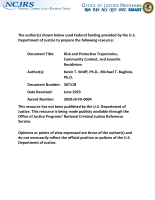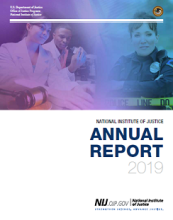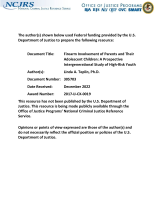Risk and protective factors
Understanding the Scope and Nature of Forced Criminality in the United States
Life-course and Intergenerational Effects of Crime and Criminal Justice Involvement: Identifying Risks and the Search for Resilience
Positive Adolescent Interpersonal Relationships (PAIR): A Community-Based STRiV Study
What Has Longitudinal Research on Teen Dating Violence Taught Us?
Self-exciting Point Processes With Spatial Covariates: Modelling the Dynamics of Crime
Risk and Protective Trajectories, Community Context, and Juvenile Recidivism
Gender-Based Violence and the Latinx Community
See the YouTube Terms of Service and Google Privacy Policy
Economic Justice for Survivors of Intimate Partner Violence
See the YouTube Terms of Service and Google Privacy Policy
Defining and Studying Elder Abuse Polyvictimization
NIJ Social Science Analyst Yunsoo Park shares her knowledge about elder abuse, a widespread issue in the U.S. and around the world, particularly polyvictimization — the experience of a range of different types of abuse and maltreatment. As much as 11% of community-residing older adults experienced some form of abuse or mistreatment in the past year. Yunsoo discusses risk factors, difficulties in defining and studying elder abuse polyvictimization, and strategies for intervention and prevention. Stacy Lee Reynolds, a Communications Assistant with NIJ, hosts.







